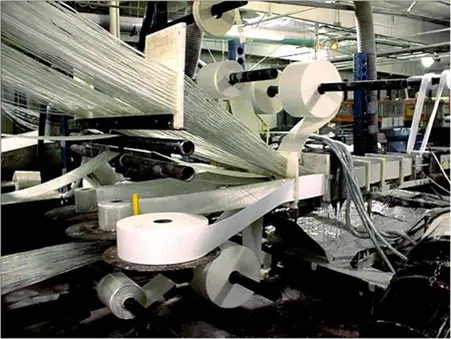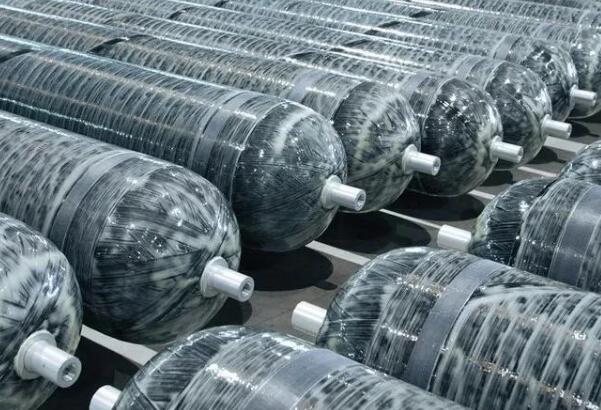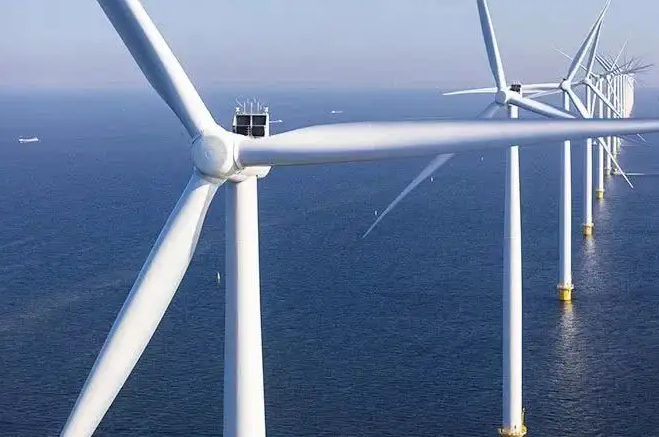The application of epoxy resin in construction mainly includes the following aspects: firstly, floor coating, secondly, building corrosion prevention, and thirdly, structure strengthening. Regarding the floor coating, the most commonly used film-forming material is epoxy resin. As the representative of synthetic resin materials, the coating is generally divided into solvent-free, solvent-based and water-soluble type. Solvent-based system has solvent volatilization, coating viscosity is small, low solid content, a thin film, construction is prone to floating color and other defects of the film into a weak impact resistance. Solvent-free system does not contain inactive solvents, solid content can be adjusted to nearly 100%, a film thickness, the construction will not appear Benard nest and floating color. Water-soluble clean wear-resistant floor coatings have good adhesion to wet substrates. On the construction of anti-corrosion, due to acid, alkali, salt and organic solvents and other media, building materials to produce varying degrees, all kinds of physical and chemical damage, this corrosion process is generally slow, short-term consequences do not show, once the harm is quite serious. In the construction project epoxy resin anti-corrosion, commonly used material products including resin cement, resin mortar, glass fiber reinforced plastic and resin glass scale. Resin mastic, resin mortar and resin glass scale, is to resin for binder add hardener, toughening agent (some materials need to add accelerator or diluent), and powder, fine aggregate, coarse aggregate, and after treatment of glass scale formulated. On the structure strengthening, concrete and reinforced concrete structure use process, often due to various factors suffered different damage, affect the service life, all kinds of buildings after many years of use, most of them will have a different degree of damage, the need for maintenance and repair. Epoxy resin made of epoxy adhesive superior performance, more modification pathway, more for the bonding of concrete components, and repair, bridge engineering, airstrips, highway repair, concrete structure crack reinforcement reinforcement or seepage plugging grouting, and so on.
1. In order to compare epoxy asphalt waterproofing materials and water-based asphalt-based waterproofing materials road performance, based on the waterproofing bonding layer in the bridge deck pavement layer in the special environment, selected representative waterproofing materials for performance tests. Modified emulsified asphalt, Tianjin Yuwang FYT-1, FYT-2 bridge deck waterproofing materials, epoxy asphalt waterproofing materials, relevant performance tests. Including the extension of waterproof material crack resistance, low temperature flexibility (low temperature resistance), high temperature stability (heat resistance), bonding properties with cement concrete, shear resistance, construction convenience. The test results show that: epoxy asphalt bond strength is high, this test for the pull-out test is cement concrete internal fracture, epoxy asphalt bond surface to maintain good. Therefore, this strength only characterizes the internal strength of cement concrete, cannot characterize the actual bond strength of epoxy asphalt. In addition, epoxy asphalt heat resistance is heated to 300 °C does not melt and flow to assess, higher than the water-based asphalt-based waterproofing materials, 160 °C evaluation standards. The above test data show that relative to water-based asphalt-based waterproofing materials, epoxy asphalt waterproofing materials have better adhesive properties, shear resistance and high temperature stability.
2. General water-based asphalt-based waterproofing materials characterize the low-temperature flexibility of the test method, for the waterproofing coating and molding on the tin, at -20 °C around the φ10mm rod to not produce cracks to be evaluated. Because of the high strength of epoxy asphalt, low-temperature deformation is large that is brittle, cannot be used to assess the low-temperature flexibility. A method of determining the low temperature flexibility of epoxy asphalt waterproofing materials, is to measure the elongation of the material at low temperatures, but the test found that the deformation is small that is fracture, it is difficult to accurately measure the value. Here try to design a new test evaluation method: in 37cm × 7cm iron sheet uniform molding epoxy asphalt materials and other waterproofing materials, after the end of maintenance at -15 °C in the asphalt mixture, beam bending machine will be the iron sheet in the middle of the span at 50mm/min for loading bending until the waterproofing material cracks. At this time the deformation value at the middle of the span to characterize the low temperature flexibility, while molding SBS modified asphalt, FYT related specimens for the same test. According to the test results can be seen, epoxy asphalt low-temperature flexibility is basically comparable to SBS modified asphalt, but much smaller than the low-temperature flexibility of waterborne asphalt-based waterproofing coatings.
3. In order to better simulate the actual use of the field effect, the upper and lower interfaces with cement concrete and asphalt concrete molding specimens, and room temperature and high temperature strength test. FYT bridge deck waterproofing material molding is as follows: first painted 2 layers of FYT-1 type, and then painted 1 layer of FYT-2 type waterproofing material, modified emulsified asphalt waterproofing material painted 2 times, epoxy asphalt waterproofing material according to the specified dosage of brushing maintenance molding. Waterproof material simulation field test shows that: epoxy asphalt bonding and shear strength is higher than other waterproofing materials, bonding strength at 25 °C and 40 °C are asphalt mixture internal fracture, this bonding strength can not characterize the actual bonding strength of epoxy asphalt. Shear strength is 25 °C in the asphalt mixture inside the movement, this shear strength can not characterize the actual shear strength of epoxy asphalt.
4. In order to further compare epoxy asphalt waterproofing materials, and other water-based asphalt-based waterproofing materials, the actual road performance, in the Sutong Bridge site for the test section of the pavement, in the construction of 7d after the field level shear as well as pull-out test. Test section field test shows that: after construction 7d, epoxy asphalt waterproofing material shear resistance is basically comparable with water-based asphalt-based waterproofing material, the bond is slightly smaller than the water-based asphalt-based waterproofing material. This is because the epoxy asphalt fully cured to reach the final strength requires a certain amount of time, in the construction site at room temperature under the conditions of maintenance needs about 50d to reach the final strength. And generally, water-based asphalt-based waterproofing materials can reach the final strength of about 7d, taking into account the actual situation of the construction period, did not carry out 50d after the scene of the horizontal shear as well as pull-out test.
5. Related construction methods
Sutong Bridge North Approach Bridge epoxy asphalt waterproofing binder layer in early October 2007 for construction, after testing the indicators are to meet the requirements. Epoxy asphalt waterproofing binder layer construction process includes: bridge deck treatment, non-spraying area protection, raw material preparation, waterproofing binder layer material sprinkling, gravel spreading, etc..
A. Construction conditions
(a) Bridge deck concrete strength should meet the requirements of technical specifications.
(b) The bridge deck slab should be dry and clean, without leakage of tendons and floating slurry phenomenon, preferably by shot blasting.
(c) The construction environment temperature should be higher than 10°C, and rain and fog should be avoided as much as possible during the construction period.
B. Bridge deck cleaning
First of all, use brooms or forest fire extinguishers on the bridge surface floating dust, debris removal, and the bridge surface of the local slurry using a special tool to remove the side of the structures protruding from the bridge deck using manual removal. After cleaning should reach no cement slurry and floating dust requirements. After cleaning should be closed to traffic, to ensure that the bridge is no longer contaminated. Each time the cleaning range should be slightly larger than the spraying range of the bonding material.
C. Protection of non-spraying area
Any contact with the paving layer are spraying area. The spraying area of the day should correspond to the construction area of the paving layer of the next day, and the edge of the spraying area should be 2-3cm more than the edge of the paving area. To avoid contamination of areas other than those in contact with the paving layer (e.g., most of the area of edge stones and guardrail seats), these areas should be covered beforehand with plastic film and adhesive tape.
D. Binder preparation
The use of special epoxy asphalt supply car, will have been preheated (insulation 120 °C) epoxy asphalt transported to the construction site, added to the intelligent asphalt sprinkler.
E. Spraying
Intelligent asphalt sprinkler truck into the construction site before using a blower to remove dust. According to the design requirements in the intelligent asphalt sprinkler through the measuring device set A group and B group material mixing ratio, to achieve accurate measurement, mixing evenly. Epoxy asphalt waterproofing binder layer spraying should be uniform, and ensure that the amount of spraying to meet the design requirements. Spraying binder before the work area should be kept dry. The edge of the spraying area should be kept horizontal and vertical (using both sides of the baffle method). Kerb, drop inlet, guardrail seat, etc. on the vertical surface of the outside, in the spraying requirements and spraying, not sprayed to the parts of the available artificial coating. Bonding material spraying such as rain, must be exposed to the sun or air-drying, after confirming the dryness of the bonding material for inspection, if necessary, and then appropriate amount of supplemental sprinkled a layer of bonding material, and then paving layer construction.
F. Aggregate spreading
In order to prevent the paving layer construction of the machine tools occur sticky wheels, epoxy asphalt spraying a certain work surface, that is, the use of gravel spreading machine for gravel spreading and other particle size. The original gravel particle size of 9.5 ~ 13.2mm, taking into account the Sutong Bridge North Approach Bridge for the lower layer of 4cm SMA-13 mixture, the thickness of thin, such as the use of large-sized gravel, for the thickness of the structural layer and crushing will have an impact. Therefore, it is determined to use 4.75 ~ 9.5mm particle size gravel, spreading coverage should reach 60 ~ 70%, according to the field construction situation, basically no sticky wheel phenomenon. Ensure the uniformity of gravel spreading during the construction process, the uneven spreading of the road should be artificially supplemented.
G. Follow-up construction process
Epoxy asphalt waterproofing binder layer should be sprayed in 2 ~ 4d within the paving layer operations, such as for some reason can not be paved within a predetermined period of time, it is necessary to re-spray the binder before the construction of paving layer.
6. Conclusion
A. The use of epoxy asphalt as a concrete bridge waterproofing binder layer, with high strength bonding properties and shear resistance, and can effectively prevent the penetration of water.
B. Epoxy asphalt waterproofing material shear strength as well as bond strength indicators higher than water-based asphalt-based waterproofing materials. Its high temperature performance is higher than water-based asphalt-based waterproofing materials, low-temperature flexibility is basically comparable with SBS modified asphalt, can effectively ensure that the Sutong Bridge approach bridge required shear resistance and bonding force.
C. Because the traditional method is not applicable to evaluate the low-temperature flexibility of epoxy asphalt waterproofing materials, so try to use a new method to quantitatively analyze the low-temperature flexibility of epoxy asphalt waterproofing materials to achieve good results.
D. At present, the use of epoxy asphalt waterproofing binder materials on cement concrete bridges is in its infancy, and there is no clear specification for the performance index requirements and construction test methods. For epoxy asphalt waterproofing materials for the bonding properties, as well as the growth characteristics of shear resistance, etc., further in-depth research is needed.
More YQXPOLYMER Epoxy Resin information, please contact us via email: sales@yqxpolymer.com, or voice to us at: +86-28-8411-1861.
Some pictures and texts are reproduced from the Internet, and the copyright belongs to the original author. If there is any infringement, please contact us to delete.




